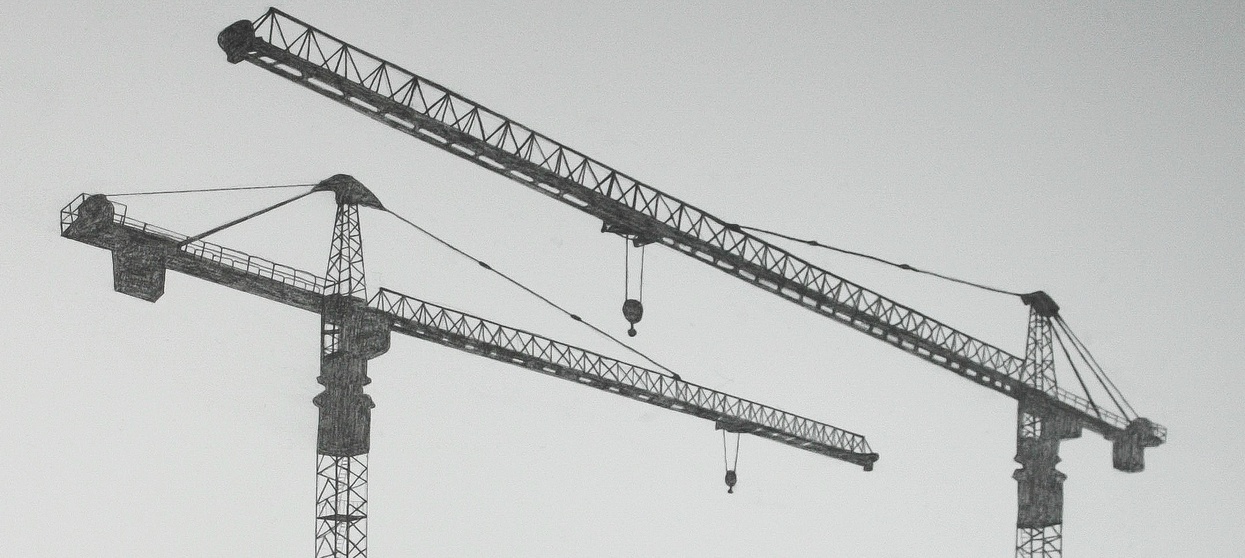Asma Kazmi Receives Seed Grant for Cranes and Cube

This year the Berkeley Center for New Media offered four junior faculty research grants to seed ambitious academic scholarship in new media at Cal. Asma Kazmi (Art Practice) was selected for “Cranes and Cube: Architecture built and unbuilt.” Read more about the project below!
The aim of this multifaceted new media art/architecture project is to map the radically changing sites and topographies of Saudi Arabia. It surveys the political force fields of idealism and grandeur of the real estate boom in the region, which is in dialogue with cycles of change and transformation of preexisting structures and localities. This project aims to analyze the interminable currents of buildings–built and unbuilt–and the histories, desires, and concurrent contexts that inform this process.
The main guiding lens for this project is the drawings of Wahbi al-Hariri-Rifai (d. 1994), a Syrian American artist, traveler, architect, teacher, and writer. Commissioned to design a new campus for the University of Medina, Al-Hariri-Rifai visited Saudi Arabia and soon became entrenched in documenting and preserving the Kingdom’s diverse architectural styles, historical heritage, and building techniques. For the Cranes and Cube project, I will lead a research trip, along with 2 graduate students, to film, document, and re/present the current state of the sites and locations that Al-Hariri-Rifai drew.
My own desire to revisit the locations that Wahbi al-Hariri-Rifai froze and preserved at a specific time in history is driven by a framework of historical and artistic inquiry that theorizes change as palimpsest, not as erasure. For me, the palimpsest form creates an apt model for this exploration since reading a palimpsest necessitates engagement with diachronic layers of information that exist synchronically within a moment of observation and re/presentation. It foregrounds the theory that image-making and writing take place in the simultaneous presence of historical layers of faded images and representations, as they contribute to the performance of a single, extended text. Al-Hariri-Rifai’s drawings provide a tangible, tactile view of the past upon which successive strata of changes can be mapped. This layered process, involving multiple authors whose voices subsume and ambiguate each other, can become the basis for a study of contemporary spatial practices of Saudi Arabia. These practices interplay with the current visual culture of spectacular edifices and ostentatious buildings that sit uneasily as they perpetuate historical forms.
The final outcome of this investigation will be an art exhibit which will interweave Wahbi al-Hariri-Rifai’s drawings with a critical juxtaposition of new media objects and documents collected and made during this trip.
Specifically, I will be exploring new possibilities of representation offered by the emerging technologies of virtual and augmented reality. Within the context of art, these immersive technologies have their echoes in the traditions of installation and performance practice. Creating linkages between VR/AR and other heterogeneous objects/gestures, this project hopes to emphasize space and history as a dynamic, changeable, and layered phenomenon. In addition, this project assimilates the viewer within the representation to provide an embodied understanding of the social and political associations of a site, power structures, memorializing of sites, the visual symbolism of architecture, and the aesthetics at play in the tides of reconfiguration and remaking of locales.
